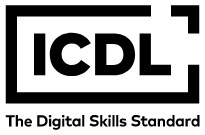Process Parameter Optimization and Crack Density Prediction in Laser Cladding Using a BP Neural Network Model
Abstract
To address the crack defects arising from the complex nonlinear mapping relationship between key laser cladding process parameters and coating preparation, this study conducted a theoretical analysis and experimental verification by employing a BP neural network to predict crack density based on orthogonal experimental data. Initially, a three-factor four-level orthogonal experiment was performed to obtain fundamental sample data for the neural network, followed by dataset expansion using kernel density estimation (KDE). The dataset was then preprocessed through min-max normalization, ultimately establishing a three-layer predictive neural network model that correlates laser cladding layer process parameters (powder feeding rate, overlap rate, and scanning speed) with crack susceptibility. The results demonstrate that the BP neural network model achieves crack density predictions with relative errors fluctuating within ±5%, while maintaining an average error of 0.85% and a mean square error of 1.11%, indicating high prediction accuracy and stable performance. Furthermore, a comparative analysis of various regression methods, including KNN, Ridge, and Random Forest, was conducted in terms of R², RMSE, and MAE metrics, revealing that the BPNN exhibits superior comprehensive performance. These findings validate the feasibility of applying BP neural networks for crack density prediction through process parameters in laser cladding applications, which holds significant importance for fabricating crack-free nickel-based cladding layers.
Full Text:
PDFReferences
Xu BS, Dong SY, Men P, et al. Quality Characteristics and testing evaluation technology status of laser additive manufacturing forming alloy steel parts (Invited). Infrared and Laser Engineering, 2018, 47 (4): 8-16
Yan SY. Crack sensitivity and evaluation method of Ni based alloy laser cladding layer. China University of Petroleum (East China), 2016
Ni LB. Research on optimization of laser cladding process parameters and scanning path planning. Hunan University, 2011
Wu J. Analysis of the main factors affecting the quality of laser cladding layer. Mechanical Manufacturing and Automation, 2004, (04):52-56.
Ni LB, Liu JC, Wu YT, et al. Optimization of laser cladding process based on neural networks and particle swarm optimization. China Laser, 2011, 38 (02): 99-104
Huang AG, Li G, Wang YY, et al. Prediction of characteristics and properties of aluminum alloy laser cladding layer based on artificial neural network. China Laser, 2008 (10): 1632-1636
Jiang SJ, Liu WJ, Nan LL. Prediction of laser cladding height based on neural networks. Journal of Mechanical Engineering, 2009,45 (03): 269-274+281
Yang DH, Ma L, Huang WD. Prediction of surface quality of laser stereoscopic forming parts based on artificial neural networks. China Laser, 2011, 38 (08): 88-93
Lei KY, Qin XP, Liu HM, et al. Prediction of characteristic parameters of broadband laser cladding pool based on neural network. Optoelectronics and Laser, 2018, 29 (11): 1212-1220
Li MY, Han B, Gao N, et al. Microstructure, composition, and corrosion resistance of high hardness iron-based cladding layer. China Laser, 2013,40 (05): 74-78
Shi Y, Chen ZJ, Zhang QL, et al. Cracking behavior of laser cladding Incone l738 alloy layer on nickel based high-temperature alloy surface. Metal Heat Treatment, 2011, 36 (03): 72-76
Zhu HJ, Hu ZW. Research on the process method of preparing high hardness layer of wedge block by laser cladding. Hot Processing Technology, 2016, 45 (10): 154-156
Jiao X, Wu G. Research on cracks in laser cladding layers. Science and Technology Information, 2013, (01):223-224.
Zhang L, Chen XM, Liu W et al. Research on the mechanism and sensitivity of crack formation in laser cladding NI based alloys. Progress in Laser and Optoelectronics: 1-12 [March 12, 2019] http://kns.cnki.net/kcms/detail/31.1690.TN.20190108.1006.008.html.
Liu GC, Huang B. Prediction of morphology of nickel based alloy cladding coating based on GA-BP neural network. Applied Laser, 2018
DOI: https://doi.org/10.31449/inf.v49i10.8890

This work is licensed under a Creative Commons Attribution 3.0 License.









